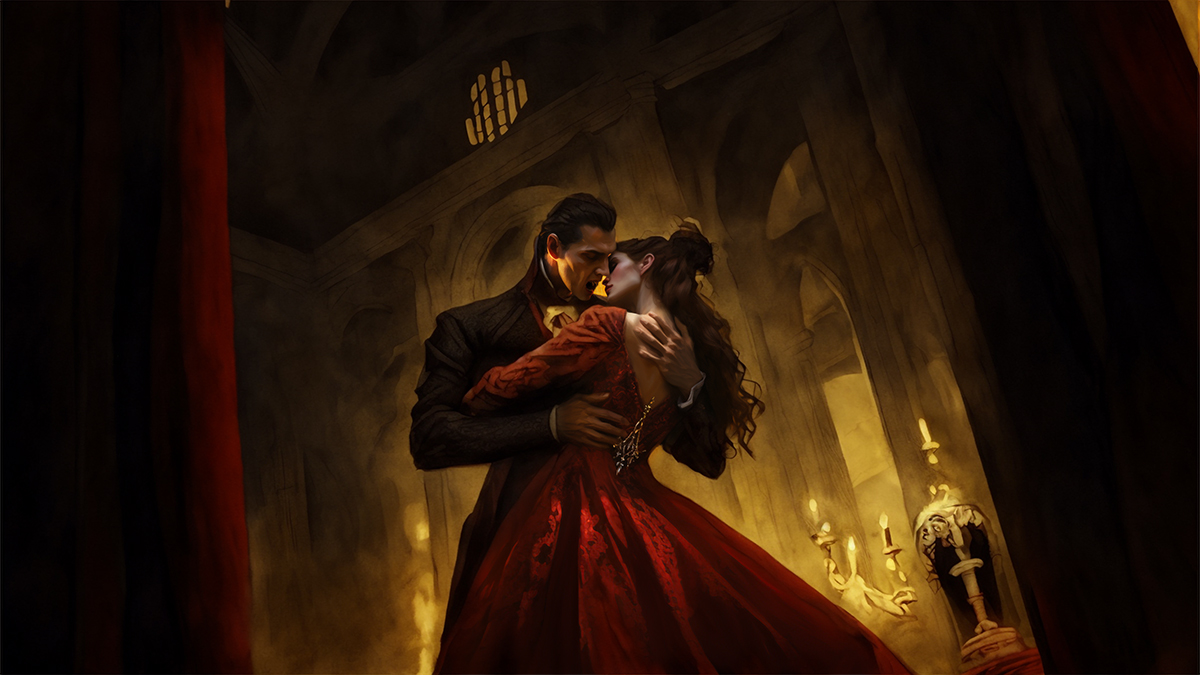Vampires are said to be human-like beings who feed on the blood of others. They are one of the most well-known and universal of all the monsters.
Description
The vampire has long been a part of folk legend. Bats are inextricably associated with vampires and the exchange of blood between animals and humans. This mingling of fluid is supposed to create an immortal being that feeds on innocent people, thereby creating more vampires.
Vampires are portrayed as creatures of the night, hiding during the day because the sun will harm their bodies.
These terrifying creatures can be found throughout the globe. Historian and folklorist Jonathan Weiss points out that beings or demons that drink blood are to be found on six of the seven continents.
The beginning of the vampire legend can, perhaps, be traced back to Mayan mythology. The Olitiau, or Cave Demon, was mentioned in their culture and was described as being as big as a man. The Olitiau was a giant vampire bat that sucked all the blood from its victims. It hunted only at night, turning into a stone statue during the day.
There are similar bat legends in Indonesia and South America, and it is possible that these legends had something to do with the proliferation of vampire sightings in Transylvania, Romania, in the 15th century.
The Greeks and Romans had stories of vampire-like beings, as did the Persians, Hebrews, and Babylonians. Sometimes, these stories are similar to the undead creatures that are familiar to us, but they can also take the form of demonic beings with no earthly connection.
In prehistoric times, when dinosaurs ruled the world, some species of large bats did exist. Some even walked on all fours like an animal. It is argued that these bats could have evolved and survived, thereby accounting for some of the recorded sightings of giant bats in recent history.
Some people believe vampires could be another form of hominid – ergo, you could, in theory, be born a vampire. The explanation is that this hominid has evolved in a similar way to humans but has evolved to survive on blood instead of food, preying on humans in order to feed.
Vlad the Impaler also has a connection to the vampire legend. He is mostly remembered for impaling his enemies on the ends of stakes, but he was also rumored to have enjoyed his enemies’ blood with his meals.
His father, Vlad the Second, was known as Dracul, which made Vlad the next Dracula. This legend has grown, causing Transylvania in Romania to become heavily associated with vampires.
The Chupacabra is another creature that is thought to indulge in bloodsucking.
Incredibly, a 2015 survey by the Atlanta Vampire Alliance learned that up to 5,000 people in the United States identify as a vampire. Some of these people will actually drink blood from donors, whereas others simply have an aversion to sunlight.
Sightings and Tales
Back in 1726, in Serbia, a farmer called Arnold Paole passed away. A few days later, he was seen prowling around his village, now boasting fangs and a bloodthirsty look in his eyes.
The villagers were beside themselves, and hysteria gripped the small community. They decided to exhume his body, which they found had not decayed at all, whereupon they drove a stake through the heart. Thus, the wooden stake cure was born.
The vampire phenomenon spread to the US in time. In 1892, the body of a New England lady called Mercy Brown was exhumed two months after her death. The body was found to show no signs of decomposition, so a stake was driven through the heart.
In the UK, a number of vampire sightings have been reported at Highgate Cemetery in London. These began in the late 1960s, with witnesses saying they saw a tall figure with red eyes.
Surely the most terrifying encounter with this alleged vampire was in 1971 when a young girl was attacked by a tall, white-faced, dark figure that pushed her to the ground. She suffered cuts and scrapes on her arms and legs.
Fortunately for her, a car arrived at the scene and the figure vanished. The girl’s story matched the myriad of other stories reported to the police, and sightings of the alleged vampire are still reported to this day.
In Mesa County, Colorado, in 2010, a woman reported seeing a vampire while she was driving. Upon seeing the vampire, she was so frightened that she reversed back along the road, crashing and overturning her car. Police found no traces of alcohol or drugs in her system.
Fodor Glava, an immigrant from Transylvania, lived in Colorado for some years. When he died, rumors began to circulate that he was a vampire.
When a tree began to grow from underneath his grave, from what would have been his chest region, locals thought it had grown from a stake that had been put through Glava’s chest.
A blood-red bush that grew next to his grave did not do much to quell the rumors.
| Other Name/s | |
| Location | Worldwide, |
| Type | Undead being |
| Habitat | Human Society |
Links
References
paranormalenlightenment.com, “Bats in Mythology: The Olitiau Cryptid”, accessed August 10, 2017.
mysteriousuniverse.org, “Exploring American Monsters: Colorado”, accessed August 10, 2017.
exemplore.com, “How to Become a Vampire in Real Life and Why You Should Think Twice,” accessed August 10, 2017.
paranormal.lovetoknow.com, “Real Vampire Sighting Accounts”, accessed August 10, 2017.
https://www.today.com/life/holidays/are-vampires-real-rcna35691, “Are vampires real? Here’s the truth about the undead,” accessed February 22, 2023.
